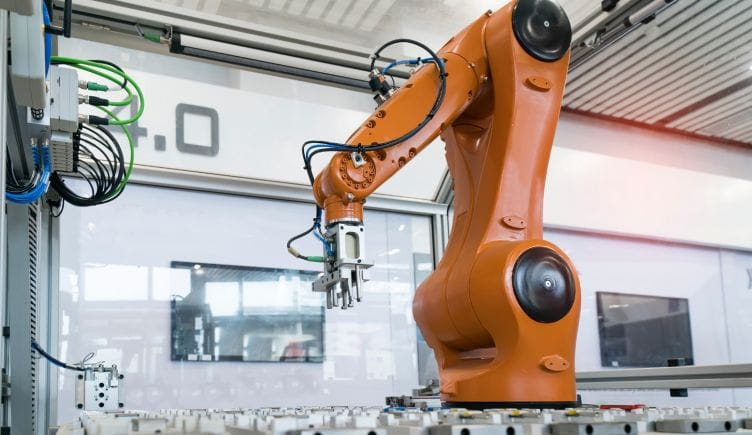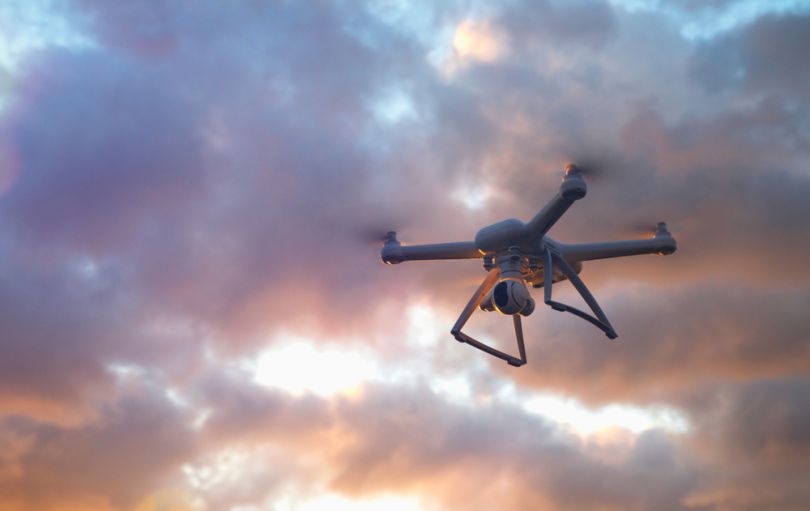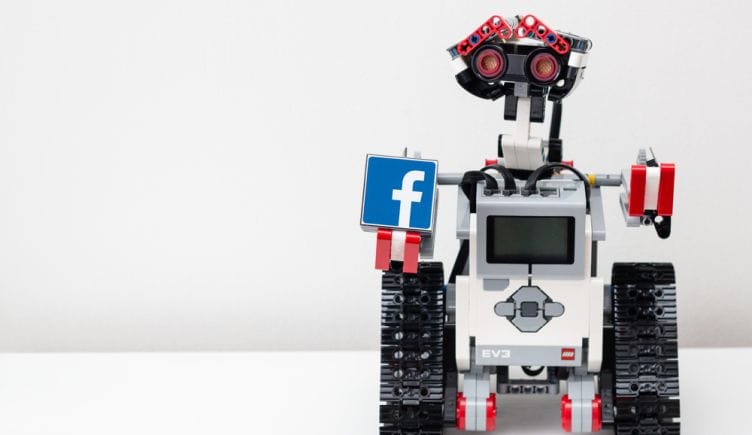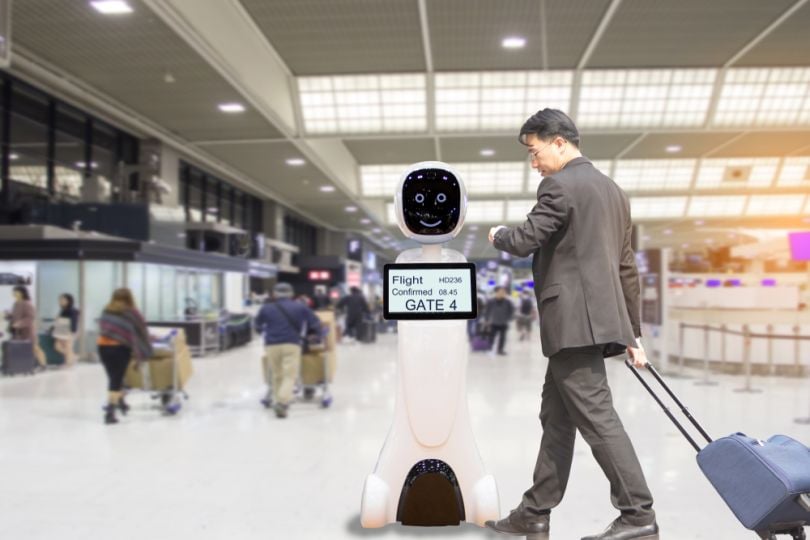 Image: Shutterstock
Image: Shutterstock
Industrial robots are automated machines for the use of manufacturing. Typically, these multipurpose machines consist of at least one reprogrammable robotic arm, or a manipulator, that operates on three axes or more. The widespread implementation of industrial robots in warehouses and on factory assembly lines can be credited to their ability to execute repetitive tasks at rapid speeds with high precision and no breaks.
What Are Industrial Robots?
Industrial robots are heavy-duty machines designed to automate the manufacturing process. They are equipped with at least one robotic arm, and often complete repetitive or dangerous tasks in warehouses and factories.
Today, there are over 3.4 million industrial robots in the world, setting the global robot-to-human ratio in the manufacturing industry at one to 71. And, according to a McKinsey survey, industrial companies plan to invest one quarter of their capital into robotics over the next five years — a market that’s projected to hit $43 billion in revenue by 2027.
Related Reading20 Top Industrial Robot Companies to Know
What Are Industrial Robots?
Industrial robots are machines built to complete automated manufacturing tasks in warehouses or factories, such as product assembly, material handling and more.
Due to the nature of the work they perform, “industrial robots must be strong, fast and accurate,” Nadia Figueroa, a mechanical engineering and applied mechanics professor at the University of Pennsylvania, told Built In.
Typically, industrial robots are built to either handle extremely heavy loads (like when assembling a vehicle or a part of a plane), or to be extremely precise and fast (like when building electronics or packaging small products).
That makes most industrial robots “quite large and dangerous for humans,” Figueroa, who also advises at the GRASP Lab, said. “They’re often inside cages or behind fences so that humans remain out of harm’s way.”
Types of Industrial Robots
There are a number of different industrial robot types, according to the International Federation of Robotics, a non-profit organization that tracks trends in the robotics industry. They include:
Cartesian Robots
Cartesian robots, also known as gantry robots, are designed with a rectangular coordinate system, just like the XYZ axes on a graph. Featuring simple, linear mechanics, complete with three sliding joints, cartesian robots move in straight lines, making for ideal application in fields like manufacturing and automation, where they can position and move objects with high accuracy and repeatability.
Articulated Robots
Articulated robots, or joint-arm robots, are defined by their rotary joints. These models can contain anywhere from two to ten rotary joints, all of which work together to imitate the motion of a human arm. Accessing a wide range of motion and flexibility, these machines bend, twist and reach into intricate spaces to take on dexterous tasks such as assembly, packaging, painting and even surgery.
Cylindrical Robots
Cylindrical robots have a single extendable arm that rotates and undulates on a fixed, circular base. This base, which operates on an x-axis, is a cylindrical post that supports the single-rotary, double-linear jointed configuration and is responsible for the namesake of these machines. Known for their compact design, cylindrical robots work in tight spaces and can access objects from various angles within a specific radius. Typically, cylindrical robots can carry heavy payloads and are especially equipped for welding, packaging and machine tending.
Delta Robots
Delta robots are turbo-speed machines typically built with three individually controlled arms that connect to a common triangular base. Thanks to their unique configuration, where its motors connect to the body instead of the arms, delta robots are renowned for their exceptional speed and agility. These arachnid-like bots specialize in rapid and repetitive actions, like pick-and-place operations in manufacturing and packaging. Built with an additional fourth arm, the one-of-a-kind Omron Quattro is the fastest delta robot to date, with 300-picks-per-minute.
Polar Robots
Polar robots — also called spherical robots — consist of an arm that can perform multidirectional movements from a fixed base. Its configuration combines two rotary joints and one linear joint, with the arm attached to the base by a twisting joint. Together, they achieve a spherical range of motion — unlike other robots in the industrial class that may be limited to linear movements. In fact, the first industrial robot, Unimate, that joined General Motors’ assembly lines in 1961 was a polar model.
SCARA Robots
Selective Compliance Assembly Robot Arm (SCARA) robots combine three-axis mobility with rotational motion. These machines feature two parallel rotary joints for horizontal movement and a linear joint for vertical motion. SCARA robots are some of the fastest machines to deliver pick-and-place operations fit for building electronics and large-scale food manufacturing.
Related ReadingWhat It’s Like to Work With a Robot
How Are Industrial Robots Used?
Industrial robots make our products, take on highly repetitive tasks and assist in groundbreaking medical procedures. This versatility makes robotics prevalent in nearly every industry. Here are some of the top ways companies are putting these machines to good use:
Manufacturing and Assembly
The most common use case for industrial robotics is to manufacture goods along production assembly lines. All that’s required is the right programming and an appropriate end effector — the tooling installed at the end of a robotic arm — for its designated task, such as constructing a product piece by piece.
Material Handling
Industrial robots are well equipped to load and unload heavy materials, as well as pack and select products. By automating the processes associated with transferring parts between different pieces of equipment, tedious and hazardous tasks are taken care of without the risk of injury.
Welding
Industrial robots perform intricate welds with precision and speed. Mechanized protocols for arc and spot welding popularized in the 1980s, in hopes to save workers from burns and inhaling carcinogenic fumes, and has since remained commonplace in the automotive and construction industries.
Painting and Coating
In industries such as automotive and aerospace, robots are used for painting and coating applications. They ensure a uniform application of paint or coating, reducing waste and improving the overall quality of the finished product.
Quality Inspection
Equipped with advanced sensors and vision systems, industrial robots can be employed for quality control and inspection tasks. They are used to identify defects, measure dimensions and ensure that products meet strict quality standards.
Picking, Sorting and Packing
Industrial robots are utilized for packaging tasks in warehouses and distribution centers. They can efficiently pick, sort and pack products with speed and accuracy to complete order fulfillments, assisting industries like e-commerce.
Machine Tending
Industrial robots are commonly brought into warehouse and factory settings to tend to other machines, such as CNC (computer numerical control) machines and conveyor belts. They can load and unload parts, change tools and perform other tasks, aiding the overall production process.
Medical and Pharmaceutical Manufacturing
In the medical field, robots have automated tasks like dispensing medications, handling delicate instruments and even assisting in surgery. They contribute to precision and repeatability in processes critical to patient care and safety.
Related ReadingWhat Does a Robotics Engineer Do?
Advantages of Industrial Robots
Industrial robots have undeniably revolutionized modern manufacturing. They enable “safer, more productive and higher quality productions by offloading the dull, dirty and dangerous jobs from manual workers,” said Misa Ilkhechi, co-founder at robotics deployment company Formic. “As manufacturers adopt robotic solutions, not only does it improve their own cost competitiveness, but it also improves their workplace culture, ability to hire and keep talent.”
Read on for more highlights of a mechanized supply chain.
Increased Productivity
Once installed, automated labor can run 24/7, non-stop at a consistent pace. Unlike humans, there’s no need for breaks, scheduled days off, unexpected absences or legal limits to working hours. Although there are many elements that affect a company or an industry’s productivity level, the International Trade Administration found a 5.1 percent increase in productivity when companies, early in their adoption of automated labor, initially increased industrial robot density by one percent.
Precision and Repeatability
Industrial robots can produce more impressive throughput when compared to humans, and do so at scale and on repeat. Taking surgical robots for example, some models are being developed to operate within the confining parameters of one micron or less.
Speed
In terms of speed, industrial robots are unmatched by both humans and cobots. Some industrial robot brands, such as FANUC, Ilkhechi said, have demonstrated industry leading mean-time-between-failure of 40,000 to 100,000 hours — or about 11 years without erring.
Safety
Industrial robots save workers from unsafe working conditions and occupational hazards. Instead of humans, companies can recruit machines when tasks involve lifting heavy payloads, poor lighting, exposure to toxic chemicals or confined spaces. Hazmat operations, search and rescue as well as mining have all employed robots to do the dirty work. A study from Syracuse University found that workplaces with one robot per every 1,000 workers decreased the OSHA accident rate by 15.1 percent.
Reduced Operating Costs
The collective advantages to installing robots in the workplace — improved efficiency, increased throughput, labor cost cuts, reduced injuries and limited errors — can result in long-term savings in operational costs. Aerospace Manufacturing and Design reported that one robotics provider calculated a drop in operational costs down to 36 cents per hour after installing a high-end industrial robot.
Disadvantages of Industrial Robots
Initial Cost
One of the biggest holdups for a company transitioning into automation is the initial cost. Entry level robots start at about $25,000 and can cost as much as $400,000. Aside from hardware, companies also have to redesign their workspace, manage new workflows and train staff to operate the machine, which temporarily drains even more time and money.
Complex Programming
In some cases, programming industrial robots to get them to do exactly what you need them to do can be a challenge in itself and may require skilled personnel. Technical hangups can contribute to longer setup times, accumulating operational costs and bottlenecks in production. The difficulty level of setup and routine troubleshooting for a freshly installed robot will depend entirely on the task it’s hired to perform and the efficiency of the system set in place.
Job Loss
Automating labor inherently implies the replacement of human workers. To date, nearly 400,000 jobs have been replaced by robots in the United States. For every robot added to an area, researchers found that employment in that region was reduced by about six workers; however, another study from Brigham Young University noted that the perception is far worse than numbers indicate, estimating 14 percent of workers in the United States have lost their jobs to robots.
Related ReadingTop 22 Humanoid Robots in Use Right Now
Industrial Robots vs. Cobots
While industrial robots are typically rugged, hazardous machines that work in fenced-off areas away from human workers, collaborative robots (or cobots) are designed for direct interaction with humans in a defined workspace. They are often lightweight models equipped with sensors that allow them to “feel” and respond to interruptions in their work, defaulting to a safety mode that brings operations to a halt to prevent injury. Cobots are designed to be safe, user-friendly and cost-effective, making them accessible to companies of virtually any size and level of technical expertise.
Both industrial robots and cobots share common core components, like mechanisms, sensors and planners. But cobot configurations focus more on the latter two elements, while industrial robots are more defined by the quality of their specialized functions.
“This makes industrial robots more suitable for conventional manufacturing automation and cobots for service automation in places where humans and robots coexist in close proximity,” Kenji Shimada, a mechanical engineering professor at Carnegie Mellon University, told Built In, listing examples such as offices, hospitals, labs and kitchens.
Frequently Asked Questions
How much do industrial robots cost?
Entry-level industrial robots typically range between $25,000 and $400,000 in price.
What is the difference between a robot and an industrial robot?
Industrial robots include all the essential parts that general-purpose robots do — like mechanisms, sensors and planners — but are specifically built and programmed for use in manufacturing.
If the website content violates your rights, please contact us to delete it。








